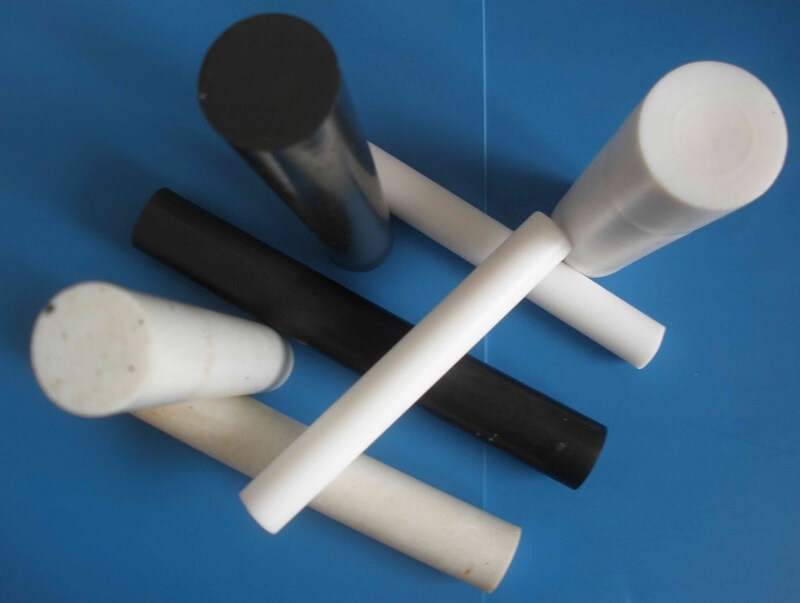The PTFE rod itself has good corrosion resistance, non-aging, durable, and reliable sealing performance; after special treatment, it has good creep resistance and cold flow resistance. PTFE rod can be in a wide temperature range Use, long-term safety, soft and easy to cut, through mechanical or manual cutting, easy to install. The process flow of making PTFE rod material is as follows:
The PTFE rod itself has good corrosion resistance, non-aging, durable, and reliable sealing performance; after special treatment, it has good creep resistance and cold flow resistance. PTFE rod can be in a wide temperature range Use, long-term safety, soft and easy to cut, through mechanical or manual cutting, easy to install. The process flow of making PTFE rod material is as follows:

1. Mold preparation: wipe clean with alcohol, there is no rust and no attachments in the mold.
2. Preparation of raw materials: pure F4 products, F4 fine resin, crushed, sieved.
3. Weigh, according to the formula G=PV (where G is the amount of feed, P is the density of the preform (2.18g/cm3) and V is the product volume).
4. Demoulding and trimming: Take the semi-finished product out of the mold, trim its surface to make the surface smooth and the edges neat.
5.Preforming (pressing): Calculate the gauge pressure of the press according to the formula, and set the gauge pressure of the press.
6. Feeding: Distribute F4 resin evenly on the entire pressing surface.
7. Sintering: Put the semi-finished product into the sintering furnace slowly, put it in a suitable amount, and heat it up to about 390 degrees for one hour, and then keep it warm for one hour. After about four hours, the temperature will start to cool down. After about four hours, it will reach the room temperature and proceed to the finished product. Out of the oven, the final shape is completed.
Post time: Aug-04-2020

